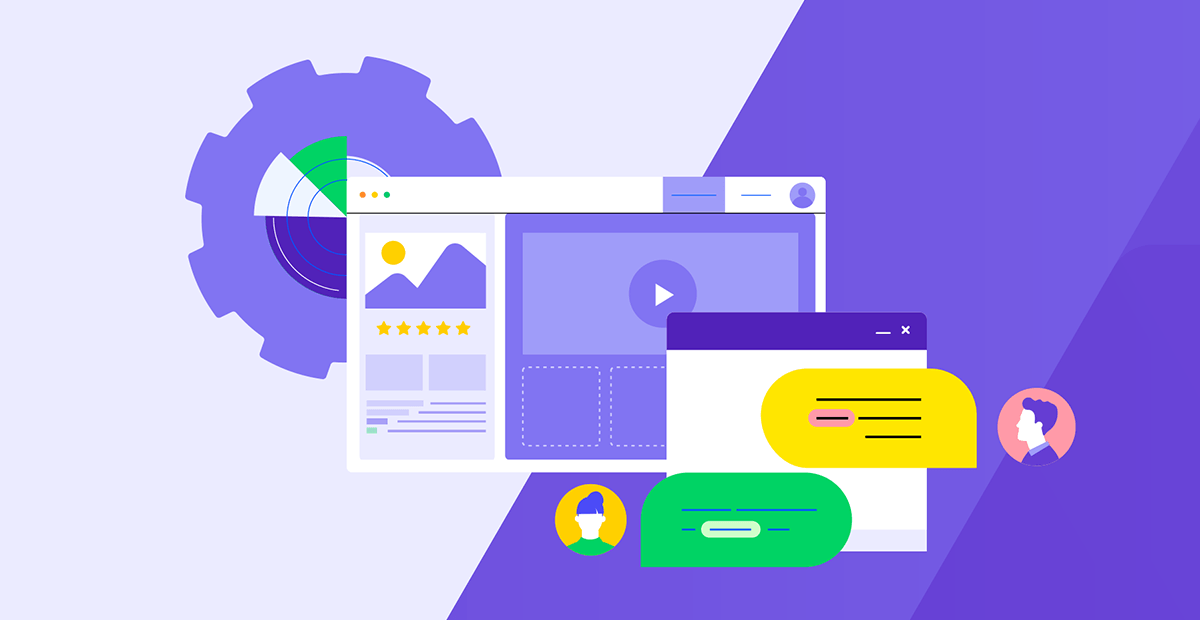You Get a CDP! And You Get a CDP! Making Sense of the Very Crowded CDP Space

“CDP” has become a catch-all acronym. Let’s see what customer data platforms are really supposed to offer, and the different types you’ll find in today’s market.
If you’ve been to a marketing technology conference lately, you’ve likely heard the buzzword “CDP” thrown around more times than you can count. Customer Data Platforms (CDPs) have become the shiny new toy that every marketer seems to want.
But with so many vendors claiming to offer a CDP, the space has become incredibly crowded and confusing. Some have even posed the provocative question: Are CDPs dead?
The short answer is no, CDPs are very much alive. But the CDP landscape has become so diverse and heterogeneous that the term is starting to lose its meaning. What exactly qualifies as a CDP these days?
In this article, we’ll cut through the noise and confusion to make sense of the CDP space. We’ll look at the different types of CDPs available and provide guidance on which ones are best suited for various business scenarios. Keep reading.
What Is a CDP Anyway?
Before diving into the different types of CDPs, let’s align on what a customer data platform is supposed to do at its core. A CDP ingests data from multiple sources, unifies that data into comprehensive profiles around individual customers and makes those profiles available to other systems for analysis and activation.
The key capabilities that define a true CDP include:
- Data ingestion from multiple first-party sources (website, mobile app, CRM, etc.)
- Identity resolution to create unified customer profiles
- Integrations to make profile data accessible to other systems
- Marketer-friendly interface for segmentation and activation
Many products calling themselves CDPs today don’t actually provide this complete set of functionalities. That’s part of the reason for all the confusion.
The Evolution of CDPs
To understand how we got to the current state of the CDP market, it’s helpful to look at the evolution of how companies have tried to manage customer data over time.
Historically, customer data lived in siloed systems specific to different channels or business functions. The website had its own data, the customer relationship management (CRM) had its own data, email had its own data and so on. Whenever a new system was added, it created yet another disconnected island of data.
As digital channels and touchpoints proliferated, it became increasingly important to understand the full customer journey across these interactions. But assembling that complete picture was extremely difficult with data fragmented across so many systems.
Early attempts at solving this problem involved building centralized data warehouses or data lakes to consolidate data. However, these projects often took years and significant IT resources to implement. The resulting data repositories were also difficult for business users to access and act upon.
CDPs emerged as a way to make customer data more accessible and actionable for marketers and other business users. They promised to collect data from all sources, resolve identities and expose unified profiles through marketer-friendly interfaces. The goal was to empower business users to self-serve their customer data needs without heavy reliance on IT.
The first generation of CDPs were primarily focused on data integration and identity resolution. Over time, CDPs have expanded to support more advanced segmentation, analytics and activation use cases. As the category matured, a greater diversity of CDP vendors and flavors emerged.
Different Types of CDPs
With that history in mind, let’s look at some of the main types of “CDPs” you’ll encounter in the market today:
The Data Unification CDP
Some CDPs focus primarily on ingesting and unifying customer data, with less emphasis on activation. Their main value proposition is creating that elusive “single view of the customer.”
Data unification CDPs often appeal to enterprises with many consumer touchpoints and siloed data repositories. By stitching together data into unified profiles, they provide a foundation for personalized cross-channel experiences.
However, without robust activation capabilities, data unification CDPs run the risk of becoming just another data silo. Make sure there is a clear plan for how those unified profiles will be used to improve customer interactions.
The Marketing Automation CDP
On the other end of the spectrum, some CDPs are essentially marketing automation tools with some customer data management thrown in. Their focus is on enabling marketing activation use cases like personalization, but the data management capabilities may be limited.
For a small or mid-sized company that is primarily looking to unify a few key data sources to enable marketing use cases, a marketing automation CDP could be a good fit. They provide “out-of-the-box” functionality for common marketing scenarios. However, marketing automation CDPs may struggle to handle the scale and complexity of data at large enterprises. Marketers may find themselves constrained by inflexible data models.
The Big Marketing Cloud CDP
Many of the big marketing cloud players like Adobe, Oracle and Salesforce have launched their own CDP offerings. These are often positioned as natural extensions to their existing marketing and customer experience tools.
The appeal of marketing cloud CDPs is tight integration with tools that marketers are already using and “single-throat-to-choke” vendor relationships. A marketing cloud CDP may be the path of least resistance at an organization that has already heavily bought into one of the major clouds.
However, the marketing cloud CDPs generally lag behind the “pure-play” CDPs in terms of capabilities. Many are still a work-in-progress as components from different acquisitions get stitched together. Marketers can also find themselves locked into that particular cloud’s ecosystem.
The “Smart Hub” CDP
An emerging category of CDPs are differentiating themselves with a “smart hub” positioning. In addition to unifying data, these CDPs apply machine learning and AI to make intelligent decisions and automate optimizations.
Smart hub CDPs are well-suited for organizations that want to harness predictive analytics and data science to supercharge their customer experience. Some vendors claim their tools will autonomously determine next best actions and offers across customer journeys.
The Vertical-Specific CDP
While most CDPs are primarily horizontal solutions, a few have emerged with specific vertical industry focus areas. These CDPs tailor their data models, use cases and integrations for the nuances of industries like retail, financial services or healthcare.
For heavily regulated industries like healthcare and financial services, vertical CDPs address critical concerns around security, privacy and compliance. Retail CDPs often have specialized capabilities around handling loyalty and purchase data.
The downside of vertical CDPs is that they can be more rigid and less flexible to adapt to a particular company’s unique needs. However, for organizations that map closely to standard industry processes, the prebuilt models and integrations can accelerate time-to-value.
Choosing the Right CDP for Your Needs
With such a diverse array of options, how do you determine which type of CDP is right for your organization? It really depends on your specific goals, resources and context. Here are some key factors to consider:
Business Goals and Use Cases
Start by clarifying the key business objectives and use cases you want to enable with a CDP. Are you primarily focused on marketing activation and personalization? Do you need to stitch together data from many disparate systems? Is applying machine learning and predictive analytics a priority?
Be as specific as possible in articulating your goals and use cases. Avoid vague objectives like “improve customer experience” or “increase loyalty.” Dig into the specific interactions and KPIs you want to impact.
Data Sources and Scale
Consider the type and scale of data you need to manage with the CDP. How many source systems need to be integrated? What is the volume and velocity of data that needs to be ingested? Are there any unique data types that need to be accommodated?
Some CDPs are better suited for handling large-scale, complex data environments while others are geared toward more straightforward use cases. Make sure the CDP can handle your current data needs with room to scale as your business grows.
User Personas
Who will be the primary users of the CDP? Is it primarily marketers and business users or will data scientists and analysts also need to access the data? Different CDPs cater to different user personas.
Some CDPs provide marketer-friendly interfaces for building segments and journeys with minimal technical skill required. Others offer more advanced analytics capabilities and data science workbenches. Make sure the CDP can empower your key user personas and use cases.
Ecosystem Compatibility
Consider how the CDP will need to integrate with your existing technology stack. What other systems will need to consume data from the CDP—marketing automation, personalization, customer service, data visualization, etc.?
Look for CDPs that offer pre-built integrations with your key systems and flexible APIs for custom integrations. Make sure the CDP can function as a central “hub” that makes data available wherever it’s needed across your customer experience ecosystem.
Organizational Readiness
Adopting a CDP is not just a technology challenge but also an organizational one. Deriving value requires process changes, new ways of working and upskilling of team members.
Honestly assess your organization’s readiness and change management capacity. Start with a focused set of use cases and expand gradually. Trying to enable too many new capabilities at once increases project risk and complexity.
Concluding Thoughts: Is the CDP Category Dead?
Now back to that provocative question that kicked off the article. No, the CDP category is not dead—in fact, adoption continues to accelerate. The CDP Institute estimates industry revenue will reach $2.4 billion in 2024, up from $2.3 billion in 2023.
However, the “CDP” label has been stretched to encompass so many different types of solutions that it has lost some of its meaning. Many vendors are pivoting from “CDP” to positioning around the specific business problems they address—marketing, personalization, customer service, data governance, etc.
The key is to look beyond the three-letter acronym and evaluate how each solution aligns with your particular goals and requirements. No matter what they call themselves, tools that help unify and activate customer data will be a critical component of the modern marketing technology stack for years to come.

